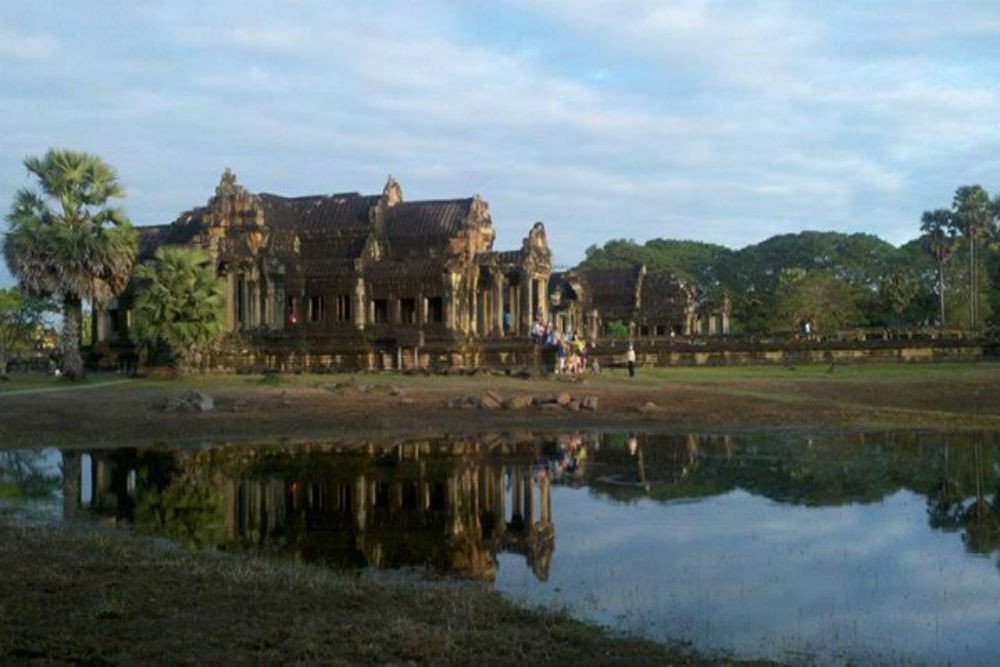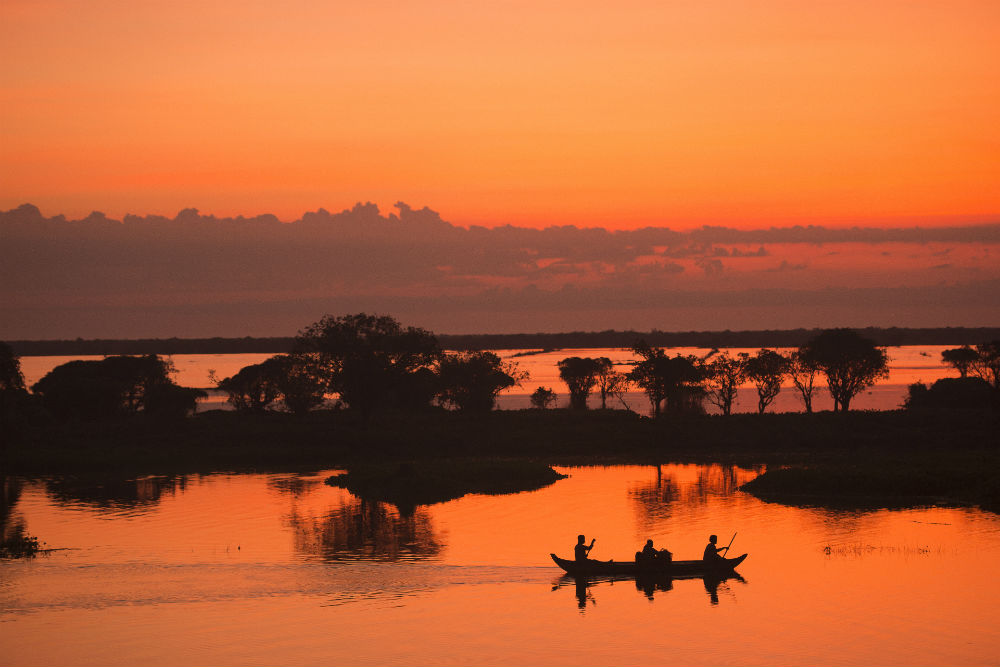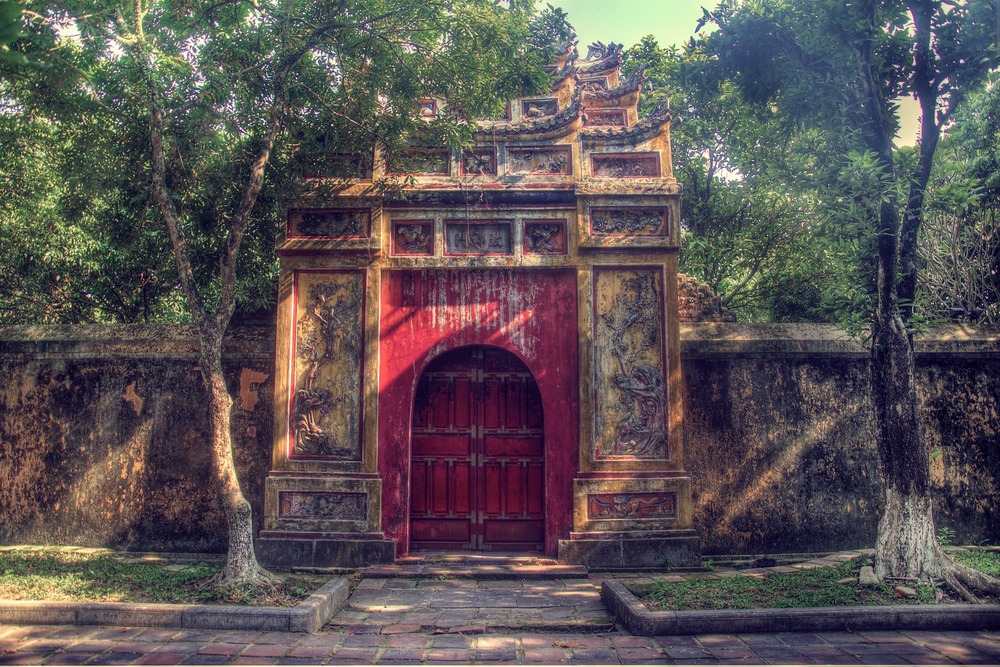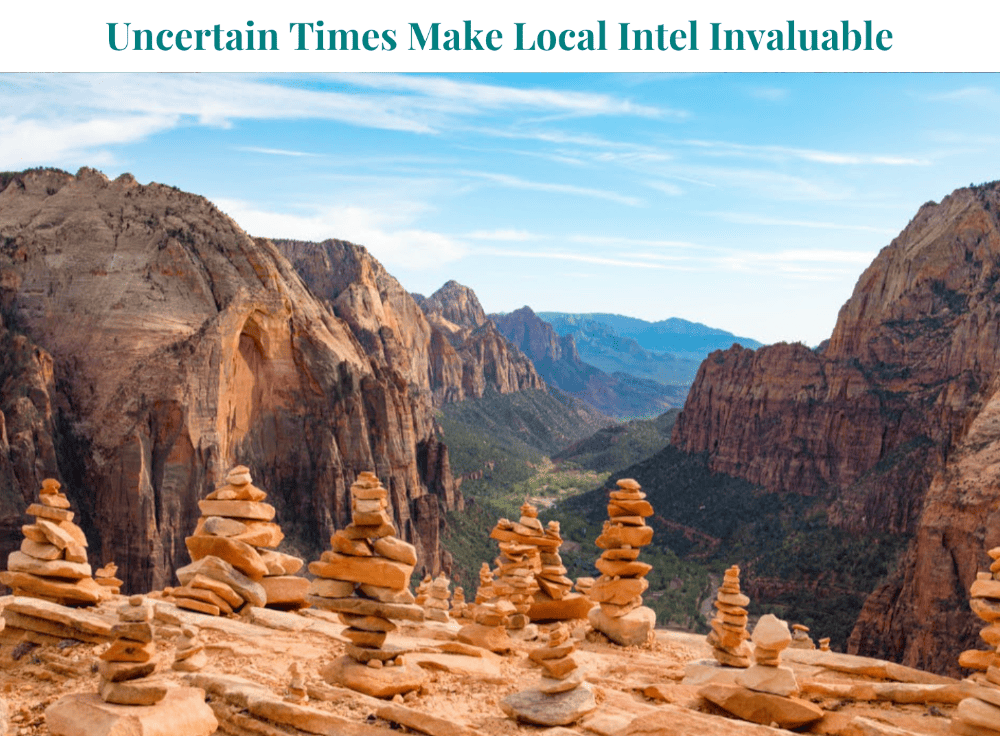Laos Travel Tips: An Insider’s Guide to Making it Magical
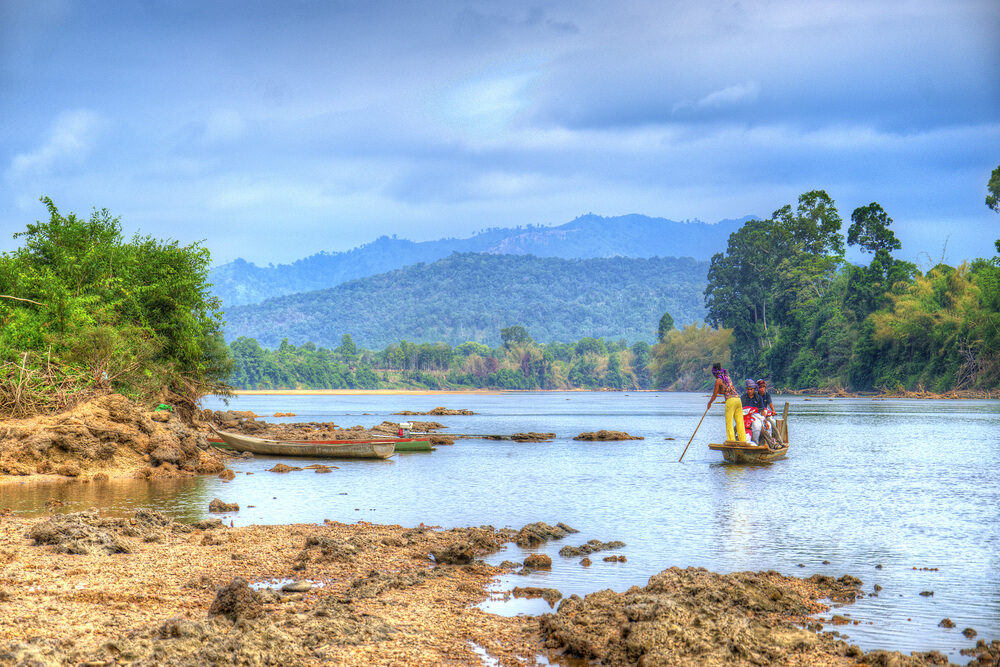 The idyllic region known as the 4,000 Islands in southern Laos. Photo: Ethan Crowley
The idyllic region known as the 4,000 Islands in southern Laos. Photo: Ethan Crowley
The insider advice on this page is from two of Wendy’s Trusted Travel Experts for Southeast Asia: Sandy Ferguson and Ethan Crowley of Asia Desk.
Sandy and Ethan craft tailor-made itineraries that take travelers to multiple destinations in Southeast Asia and combine five-star creature comforts with authentic local experiences. Both grew up in the region: Sandy graduated from the International School of Bangkok in 1969 while his father was serving in the Vietnam war and has planned trips to the region for more than 30 years; Ethan was raised in Cambodia and is fluent in Khmer. Sandy now splits his time between Saigon and the U.S., while Ethan keeps the office running in South Carolina. This team is always candid about what works best for travelers, and, just as important, what doesn’t. They have a vast network of powerful contacts in the hotel industry—which translates into status for you—and a wonderful selection of on-the-ground hosts, all charismatic locals whom Sandy considers family (some of them really are!).

Where to Stay and Eat
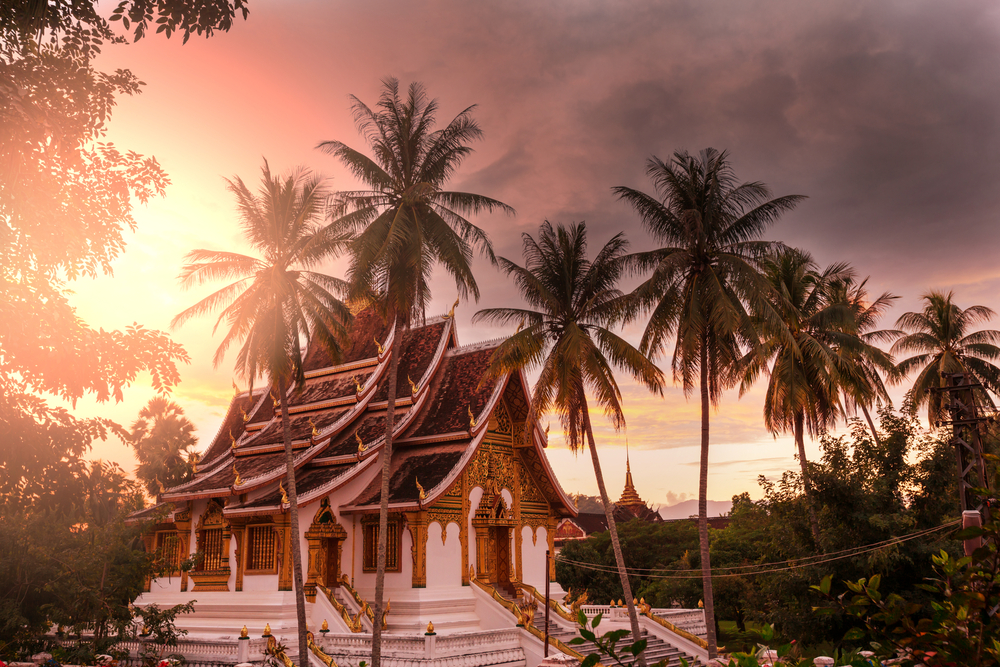
A temple in Luang Prabang, Laos. Photo: Shutterstock
Best-value splurge hotel
Luang Prabang’s newest luxury property, MyBanLao, recently opened with a Lao-experienced hotelier at the helm. The location, a few blocks from Amantaka and the night market, was once the home of a Lao general in the former U.S.-supported government, and it doubled as a CIA office during the famed Secret War in Laos. The old “burn room” for keeping—and if need be, burning—sensitive documents, now a whiskey and cigar bar, is protected by a 12-inch-thick, blast-proof door. The property conforms beautifully to the UNESCO World Heritage architectural requirements in a most functional fashion and includes a couple of two-bedroom traditional Lao wooden houses for an exceptional, and very traditional, Lao experience.
Restaurants the locals love
Joma Bakery & Café, first opened in Vientiane in 1996, expanded to Luang Prabang three years later and now has 12 stores in four cities across three countries. Their coffee is the best in Laos, their Lao pumpkin soup is to die for, and they make the best reuben west of New York City!
Another popular local spot in Luang Prabang is Ban Khili Khao Piek Noodles, a small shop with only a few tables. Khao piek is a Lao noodle soup that has been perfected in Luang Prabang, and this shop offers the best in town. Only the one soup is available, but you can get it with pork, chicken, or vegetarian. Go before 11:30 a.m. or after 1:00 p.m. to avoid the lunch rush and get a seat.
Yaek Pak Pa Sak is a great place for local color in Vientiane; this eatery and bar is packed every night. It’s not far from the town center, located on the corner of Sithane Road and Quai Fa Ngum, and just across the street from the beginning of Vientiane’s famous Riverside Park. The bar has views of the Mekong, live music, good eats and, and Beer Lao, which is by far the best brew in Southeast Asia.
Dishes to try
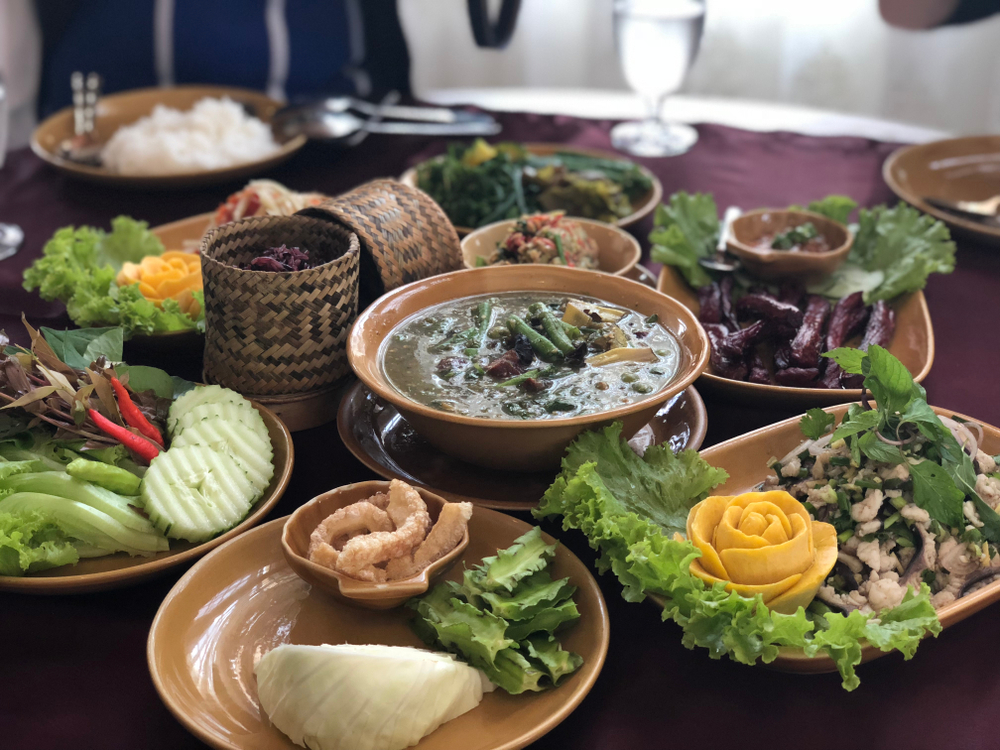
A selection of local Lao food. Photo: Shutterstock
Lao food is famous for complex flavors presented with incredibly fresh local ingredients. The dishes seem endless and are all made with a lot of preparation and love. Sandy and Ethan’s favorites include Luang Prabang sausage, as sold by Mrs. Noy at the local market beside the Amantaka during lunchtime. You can have a delicious meal of sticky rice, sausage, and jeow (dipping sauce made from eggplant, tomato, or pepper) for $2. If you miss Mrs. Noy at lunch, you can pick a close second at one of the stalls near the night market. They also encourage you to try mok paa, which is steamed fish in banana leaf. The fish, herbs, garlic, and peppers are all pounded together and packed into the leaf, making for a refreshing and highly fragrant dish. It’s popular throughout the country, but Vientiane is especially famous for its mok paa.
Meal worth the splurge
In Luang Prabang, the newly opened Gaspard Restaurant is the best fine-dining experience in Laos.
What to See and Do
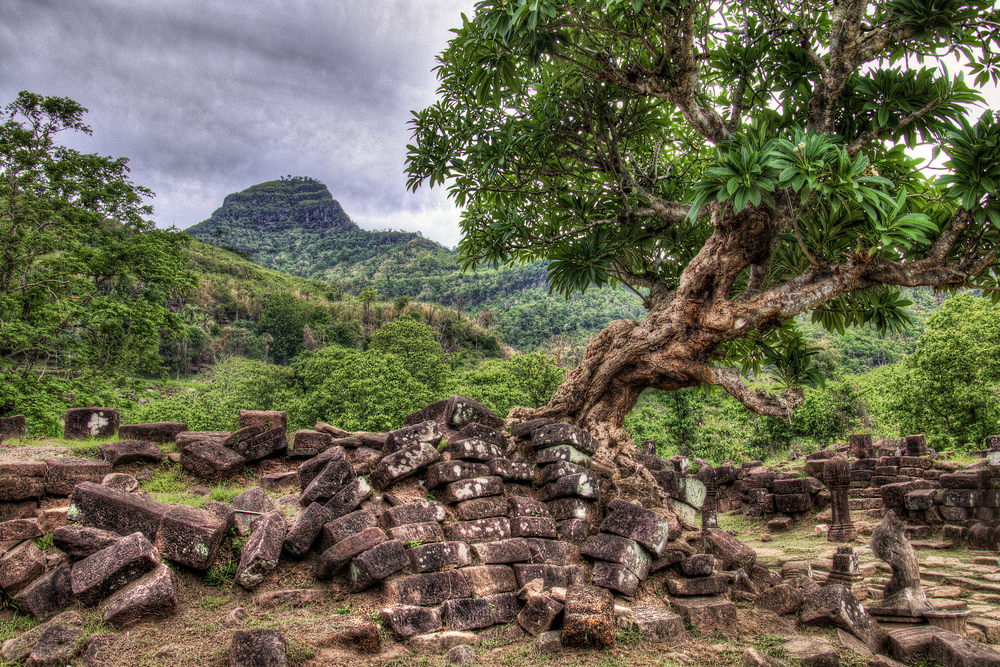
The ruins of Vat Phou, in southern Laos, is part of a UNESCO World Heritage site. Photo: Ethan Crowley
Don’t miss
More than half of the world’s Lao-speaking population actually lives across the Mekong River in Thailand, mostly in a northeastern region of the country called E-sarn. To get a full understanding of Laos, spend some time in E-sarn, on the Thai side of the river.
Most overrated places
Vang Vieng, the darling of travel blogs and influencers because of its incredibly spectacular scenery, should be skipped to avoid the crowds of backpackers who descend for the tubing, drinking, and sampling of local psychedelic mushrooms.
The Plain of Jars is a fascinating archaeological site to be sure, but many travelers find it underwhelming, depending on their expectations.
Most underrated place
Champasak and southern Laos. With the arrival of quality accommodations in southern Laos such as The River Resort, visiting the mysterious pre-Angkorian, 10th-century temple of Vat Phou, the islands of Don Khong and Don Khone, the Tad Somphamit waterfall, and other nearby attractions is a lot more comfortable than before. This area, a paradise known as the “4,000 islands,” is rife with both ancient and colonial history; see it now before it’s too late!
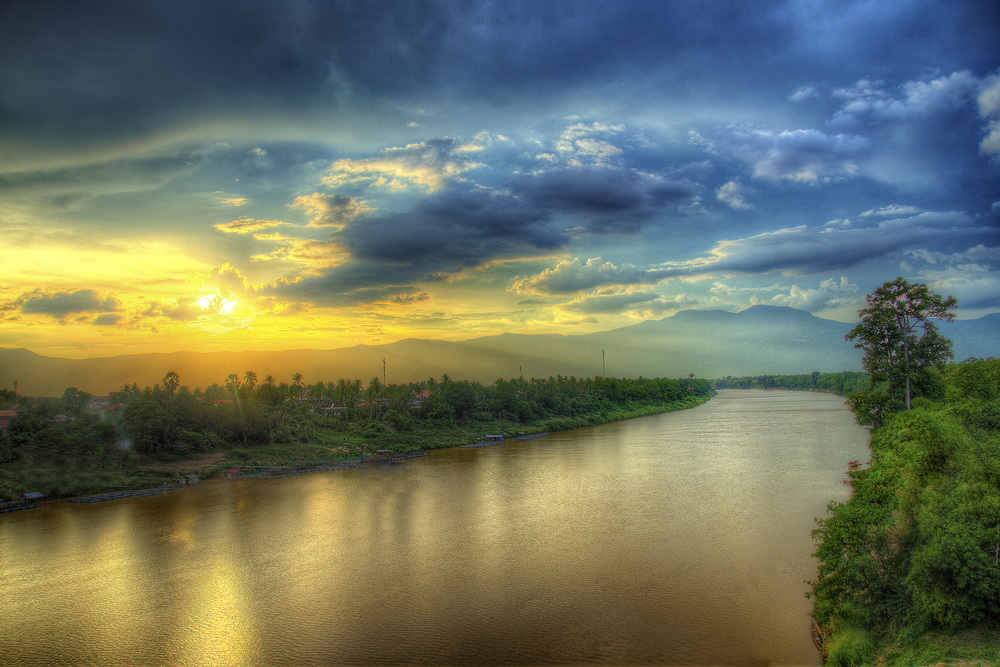
The Sekong River in Champasak, southern Laos. Photo: Ethan Crowley
Hidden gem
Pakbeng, a small Lao town on the Mekong River, about halfway between Luang Prabang and the Thai border at Huay Xai. It sits on the north side of a deep valley where the Nam Beng River meets the Mekong and has been the end of a long trade route from Yunnan, China for a millennium. In only the past few decades, Pakbeng has been connected by a paved road to Oudomxai, the next major town along the river. An elephant sanctuary was opened on the opposite side of the river in 2017; every morning elephants come to bathe in the river and their calls echo throughout the valley. In 2018, Le Grand Pakbeng opened with 45 tasteful rooms atop a hill at the north end of town, with a magnificent 360-degree view.
Cheap thrill
Local Lao cuisine is a cheap adventure all by itself. You can easily go to a market in any town and order a couple of traditional dishes for about $1 each. The dishes will be much more authentic than what you would get in a restaurant in the main parts of town—and one-fourth the price.
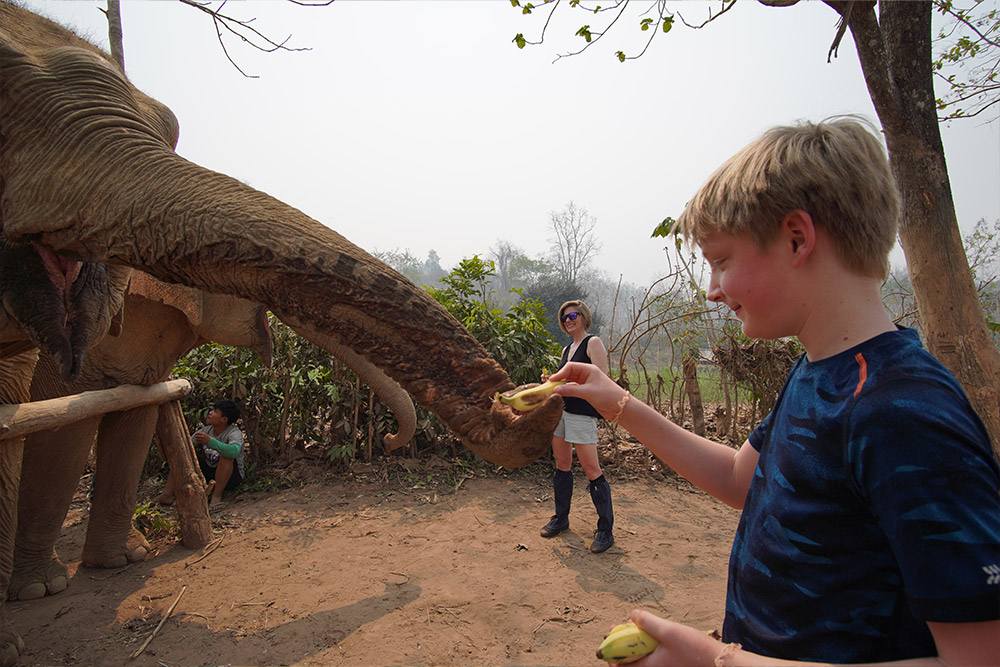
Feeding elephants at the MandaLao Elephant Sanctuary, outside Luang Prabang. Photo: Ryan Damm
Best wildlife experience
The MandaLao Elephant Sanctuary offers quite possibly the best—and most ethical—elephant experience in Southeast Asia, just outside Luang Prabang. MandaLao works with the WWF and World Animal Protection and is a haven for elephants rescued from the logging industry and riding camps. Spend the day helping to bathe and feed some of the most intelligent, caring, and enormous mammals on earth.
Prime picnic spot
From Luang Prabang, follow the Nam Khan River to the Tad Sae waterfall, a stunning limestone cascade with florescent turquoise pools. Here also lies the tomb of the 19th-century French explorer Henri Mouhot, the first European to see Angkor Wat and visit the Royal Kingdom of Luang Prabang. It’s a great spot to picnic, as many Lao people do, so come early on weekends.
How to spend a lazy Sunday
Take a leisurely bike ride (all the hotels have bikes available) around Luang Prabang, stopping for drinks or snacks along the riverside and to have a massage. Sunday is a great day to ride a bicycle because there are not as many cars in town, as locals will either be home resting or have driven outside of town for the day.
Best Times to Go
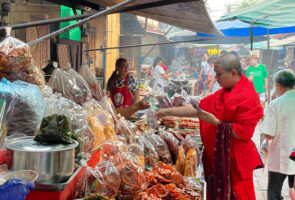
The cooler season runs from October to February, but avoid the ten days following Lunar New Year.
Summer travel to Laos is underrated. May through July can be lovely, even though it is the beginning of the rainy season. An afternoon shower shows up two days out of three, which actually can be quite memorable—you’ll never forget taking shelter from the rain in a Lao temple! The countryside is lush and green, there are fewer tourists, hotels lower their rates, and you see far more local life and agriculture. If you don’t mind a rain shower now and then, it’s a great time to visit!
Worst Times to Go
August and September are the peak of the rainy season—but even then it is a “daily downpour” kind of rain, with sun in between.
The last week of February through March: Farmers in northern Laos and Thailand, who practice slash-and-burn agriculture, prepare their land for planting by burning their fields, causing major air-pollution problems. At its worst, the atmosphere can be so hazy and brooding that the street lights come on at midday. Best to wait until the rains begin after the Songkran New Year in mid-April.
Biggest Rookie Mistake
Bargaining too much. Laotians are generally non-confrontational people and (outside of tourist markets) they rarely mark up their products for travelers. At times they will even, when faced with aggressive haggling, sell below their cost in order to save face. Don’t spend time (and emotional effort) to save the equivalent of $1 to $2; instead, pay the asking price and put your tourist dollars to good work.
Can't-Miss Photo Op
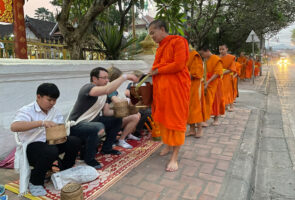
Each morning at first light in Luang Prabang, well over a thousand saffron-robed monks pass through the city to receive alms, mostly food to sustain them for the day. Sandy and Ethan can arrange for you to witness the procession—and photograph it—in a respectful way.
Scam to Avoid
Be careful of shops labeling Buddha images and figurines as antiques. Ask your tour guide for legitimate shops that sell authentic antiques; if a piece comes with a certificate, that means it’s authentic and that you are allowed to take it out of the country. Sometimes religious artifacts that are not documented can be confiscated when you leave the country—especially if the shop you purchased them from tips off Lao customs at the airport. It’s an easy way for them to sell the same “antique” many times over!
The Souvenir
Handmade Lao silk and cotton textiles—anything from a cotton scarf to a mosaic wall hanging. Each weaver has their own style, based on the ethnic group they belong to and the region they are from. These textiles are highly sought after throughout Southeast Asia, since many neighboring countries have replaced handmade textiles with factory-made versions. Unfortunately, many of the factory-made textiles are being passed off as handmade in night markets in popular tourist destinations. If you are in a weaving village, look for weaving looms outside the homes and try to purchase directly from the artisans themselves to help promote this disappearing handicraft. The best place in the country to purchase textiles is the province of Houaphan, credited as the birthplace of Lao textile weaving. This region is known for producing 100% all-natural dyed silk and highly intricate pieces.
Must-have Apps
Google Translate will translate your text from English to Lao and vice versa, and it accepts entries in Lao script. It is very easy to use and can come in handy when you are on your own, especially in rural areas.
The TripAdvisor app is very accurate when it comes to finding the best restaurants in Luang Prabang and Vientiane.
Airport Intel
When flying Lao Airlines’ fleet of ATR turbo-prop aircraft, ask for a seat in the back so that you are one of the first off the plane (passengers exit from the rear). Only a couple of immigration officers work the station for visas on arrival, so getting there first will lessen your wait time considerably.
Tipping Tip
A 10% service fee is typically included at hotels and restaurants, but an additional cash tip is always welcomed and usually not thrown into the tip pool but rather shared by those who actually served you. At restaurants that cater to tourists and don’t include a service fee, tip at least 10%.
Don't Forget to Pack
Mosquito repellant, a good stomach-calming medicine like Pepto-Bismol, a cream used for rashes from walking and sweating all day, cotton handkerchiefs to wipe the sweat from your brow, feminine hygiene products, and trusted medicines. While it is very easy to get many medications at pharmacies in Laos, they may not be the ones you rely on for allergies, colds, headaches, etc.

